

The Green London Way is a walking route of 110 miles length around London split into 18 sections. It follows much of the route of the 78 mile long Capital Ring but has some new sections. The Green London Way is largely the work of one man, Bob Gilbert, who is a supporter for the protection of urban open spaces and public access. His book, The Green London Way, outlines each section with detailed description of the historic and wildlife aspects of each section and is being used as I walk the route.
This is a circular walk starting and ending in Woolwich and exploring the wooded area to the east, including Plumstead Common, Abbey Wood, Lesnes Abbey and Shooters Hill. Being the longest walk in the book at 11.5 miles I decided to split it into two parts with a convenient break half way at Abbey Wood. Apart from a section towards the end on the Capital Ring all of this walk covered new ground, some of it following parts of the Green Chain walk that I had planned to do some time.

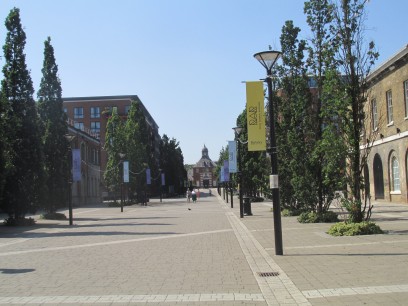
So after a fairly long trip on the Jubilee and DLR lines I arrived at where I had finished last time, the entrance to the Woolwich foot tunnel. A fleeting glimpse of a Capital Ring sign. It had been sweltering temperatures all week heading for 30C in the afternoon, the walk through the tunnel was refreshingly cool. Out on the south bank I turned off the Capital Ring but followed its sign which still pointed the wrong way for a short walk along the river to Woolwich Arsenal Pier.
Away from the river and into the Royal Woolwich Arsenal site. This once bustling hive of activity has now been modernised into a very attractive area with street markets and several museums. It is probably worthy of a special visit one day. After the Arsenal though there is quite a stretch along suburban and busy roads before reaching Plumstead Common and the countryside again.
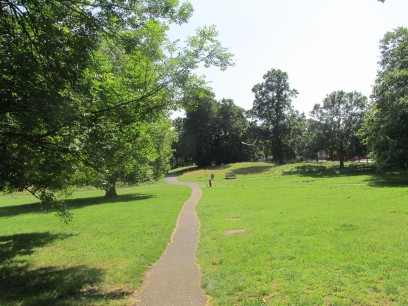

So off into Plumstead Common, an area that has a long history of being wanted for the ever growing Arsenal and eventually the Plumstead Common Act was passed in 1877 and the land became a public common. Of particular interest in this part is the old windmill where an enterprising mill operator obtained a licence to sell alcohol in its house and it remains today as the Old Mill pub although the mill remains as a stump.


The second half of the common is called Winns Common and in the middle of this is The Slade, actually the name of a street, with a steep descent and ascent with a fairly spectacular staircase.

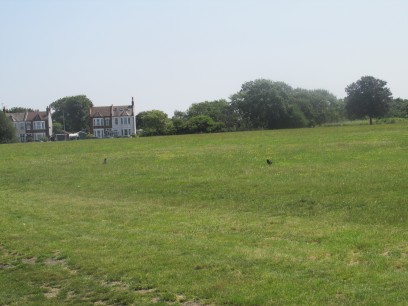
Another feature of Winns Common is dark green circles in the grass created by the 'fairy rings' of the champignon mushroom together with a prehistoric tumulus. I did not identify these directly but there is evidence in these photos.
The area beyond Winns Common by Wickham Lane was previously used for chalk mining and the area below Wickham Lane is riddled with two miles of lost passages. When the area was developed pre-war sink holes were common and eventually the old mines were filled with fly ash to solve the problem. No evidence of these former mines remains today.

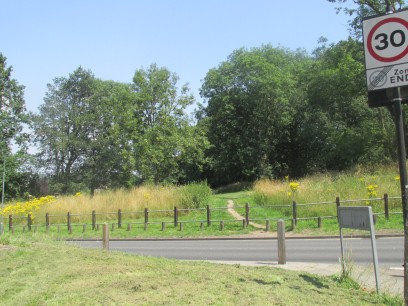
Crossing Wickham Lane the fairly extensive Bostall Woods are entered. Here the Green Chain route is left and an unmarked route is followed to Bostall Hill. These woods remain one of the most thoroughly rural spots within the London area, certainly one can feel isolated from the noise of the city. The second section across Bostall Hill is called Co-operative Woods with a long history with the Royal Arsenal Co-operative Society. The access to this section on the walk was via a fairly hidden path and despite searching I failed to find it so had to walk round the outside via the roads to reach the exit the other side.
Then a short walk via suburban roads to the busy Knee Hill. The walk continues directly opposite along the path you can see but the 'narrow gap' in the fence mentioned in the guide has now been closed. But at this point I was ending for the day so turned left for the short walk to Abbey Wood station for the trip home. Along the road I passed the official entrance to Lesney Abbey Woods so when I continue I shall enter that way.
I took the train back from Abbey Wood to London Bridge where I had a pleasant pub lunch followed by a nice walk along the South Bank back to Waterloo and then home.
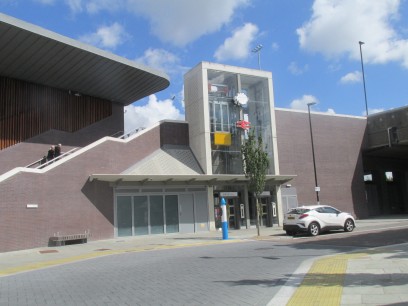
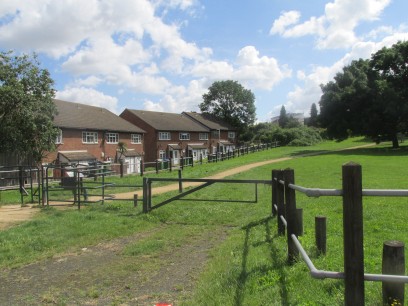
After a good trip up to Waterloo and surprisingly catching the 1015 train from Waterloo East I arrived where I had finished the previous week, Abbey Wood train station. The platforms for the new Elizabeth Line, otherwise known as Cross Rail, were tantalisingly visible behind a fenced off area and the departure boards there even suggested if I waited a short while a train to Paddington would be arriving. But those are only test trains, that part of the platform is blocked off to the public and the Elizabeth Line roundel outside the station is covered over. A bit down the line the Elizabeth Line depot was passed with plenty of new trains patiently waiting.
A short walk down the road and I reached the entrance to Lesnes Abbey Park. The path here leads directly to the green gate the guide book indicates if I had ducked under the fence lower down. Into countryside.
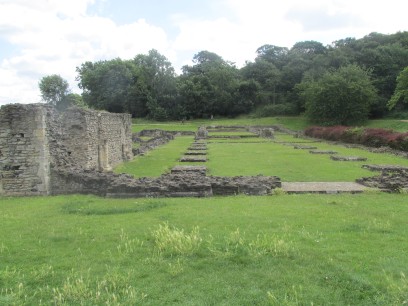
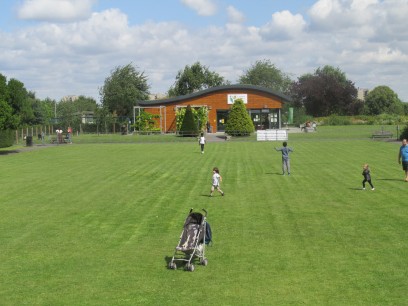
Lesnes Abbey was built in 1178 by Henry II, dedicated to the Virgin Mary and St Thomas Beckett. At the time it was a huge abbey but it was suppressed by Cardinal Wolsey in 1524 and fell into decay. There are just a few ruins left today but the grounds were purchased by London County Council in 1936 and landscaped with gardens and a cafe.
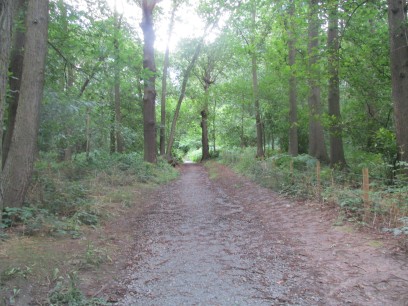

Out from the Abbey and into first Lesnes Abbey Woods then the lower half of Bostall Woods, largely following the route and marker posts of the Green Chain walk.


Eventually after passing a bowling green and then a busy road junction on the A206 I reached Plumstead Cemetery with a magnificant entrance. After that East Wickham Open Space, a former Council tip now made into a public open area. The summit of Shooters Hill appears in the distance. I took a wrong fork on the tracks here and ended up on the south end of the Space. A friendly resident pointed me in the right direction, and the route then followed urban streets for a while.
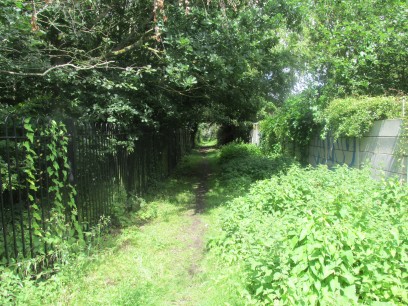
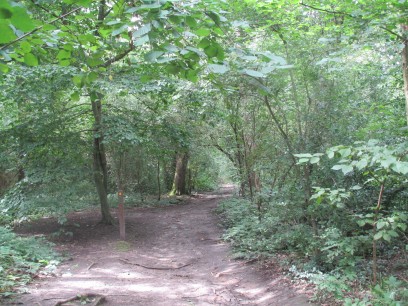
After the suburbia footpath FP245 is reached which goes around Hillview Cemetery. A delightful narrow pathway though with lots of stinging insects. This led down to the busy A207 and then into Oxleas Wood. Lost the Green Chain signposts and took a wrong path again but eventually got back on track. Passing the busy cafe the paths were confusing again and I had to backtrack to find the right one. Whatever, lovely woodland.
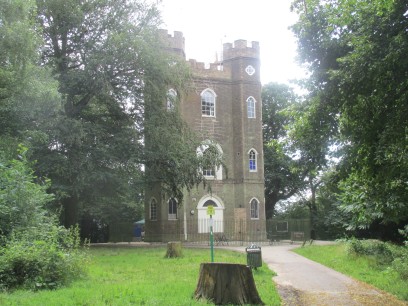
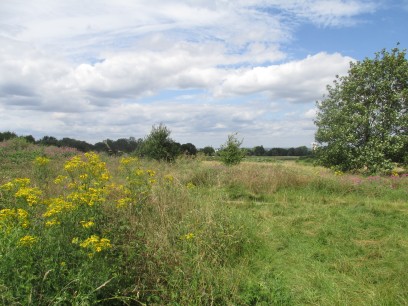
Into Jack Wood then Castlewood where the Capital Ring is joined and eventually Severndroog Castle was reached. The cafe was open but time was moving on, the viewing platform is only open on Sundays. Coming out of the woods was a short stretch of Eltham Common and after a busy road junction the route went through Woolwich Common up to Woolwich where this section finished. Woolwich Common seemed far wilder than the other commons I have been on.
I had a belated pleasant lunch in the Great Harry pub. This pub is noted for being a victim of the 2011 London riots when it was torched and burnt to the ground. You would not know now. Then the train back to Waterloo and home.